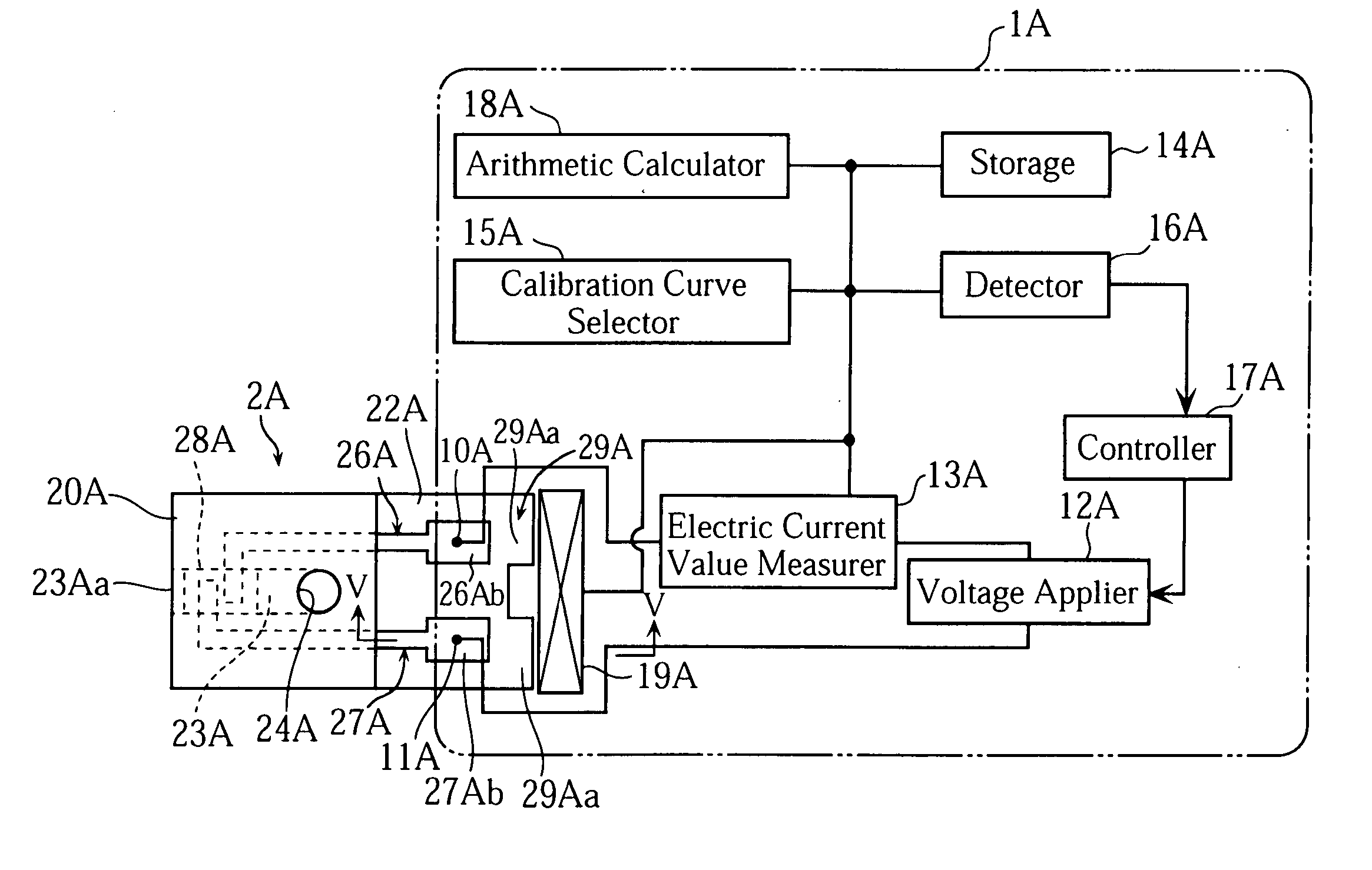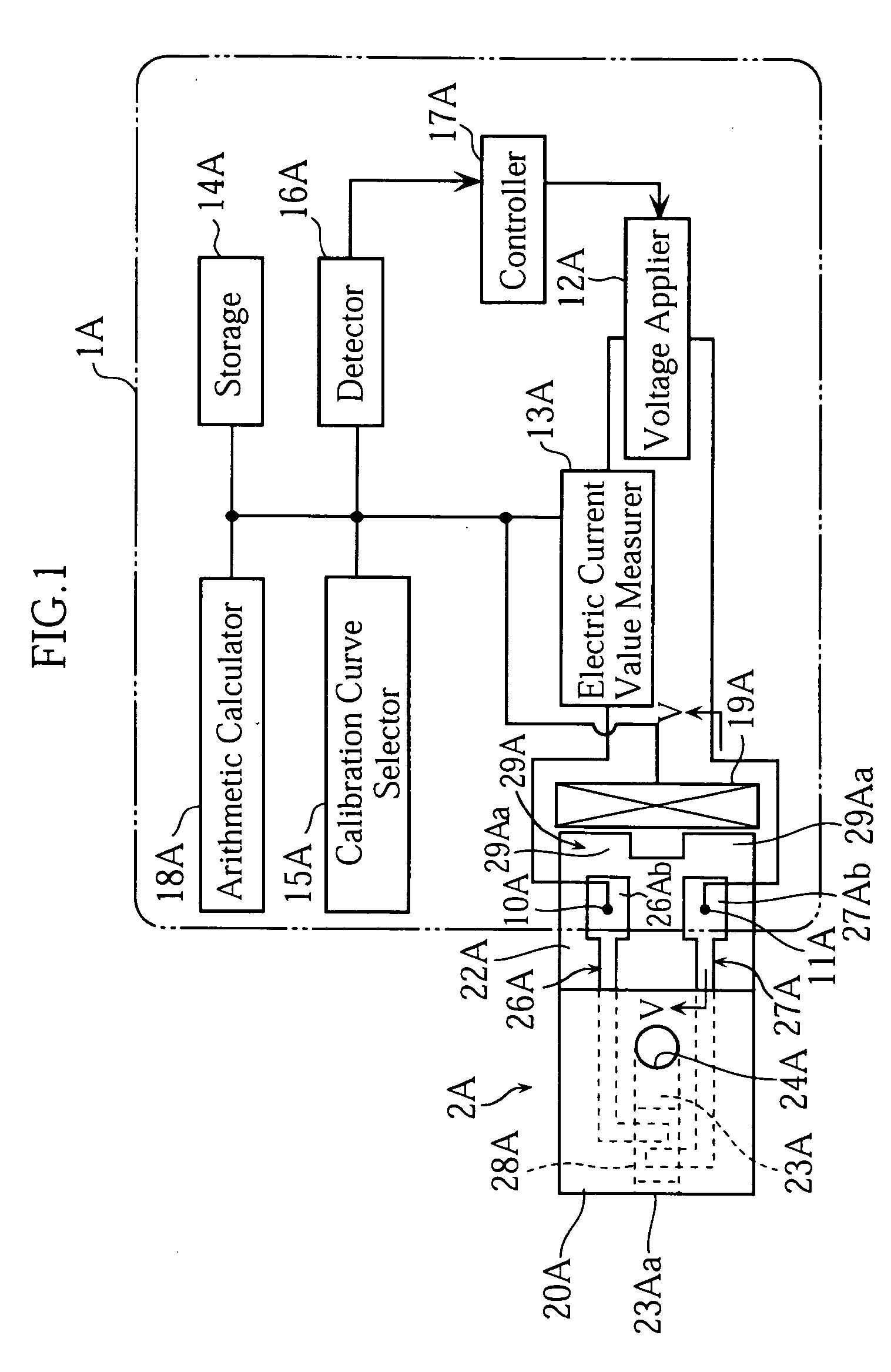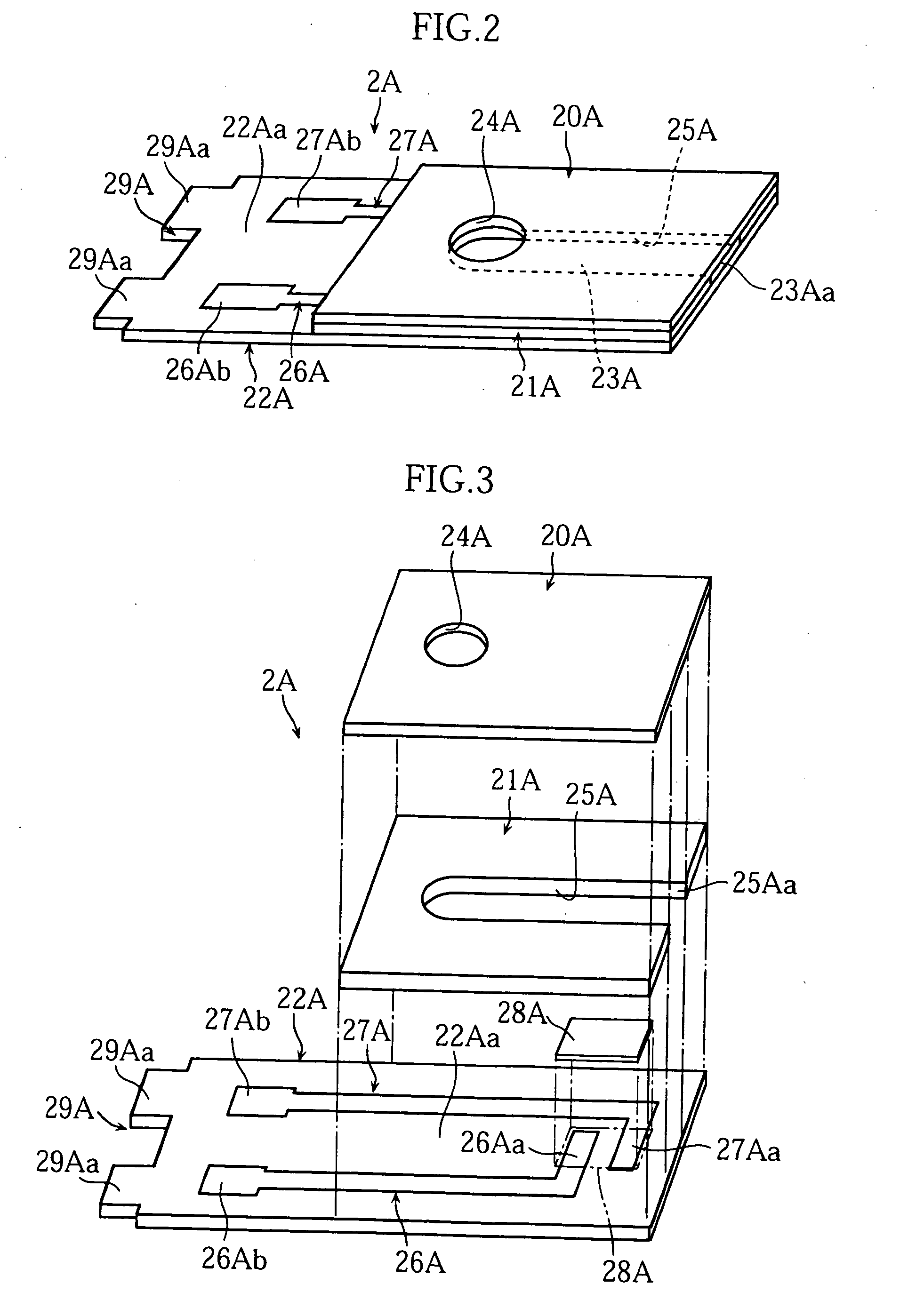Analyzer having information recognizing function, analytic tool for use therein, and unit of analyzer and analytic tool
- Summary
- Abstract
- Description
- Claims
- Application Information
AI Technical Summary
Benefits of technology
Problems solved by technology
Method used
Image
Examples
first embodiment
[0058] First, a first embodiment will be described.
[0059] As shown in FIG. 1, an analyzer 1A uses a biosensor 2A. The analyzer 1A is capable of performing an electrochemical measurement on the concentration of a specific component in a sample fluid supplied to the biosensor 2A.
[0060] The analyzer 1A generally includes measuring terminals 10A, 11A, a voltage applier 12A, an electric current value measurer 13A, a storage 14A, a calibration curve selector 15A, a detector 16A, a controller 17A, an arithmetic calculator 18A and an information recognizer 19A. Details of the components 10A-19A will be described later.
[0061] The biosensor 2A, on the other hand, includes a cover 20A, a spacer 21A and a substrate 22A as clearly shown in FIG. 1 through FIG. 3, and these components provide a passage 23A.
[0062] The cover 20A has a hole 24A in order to allow gas in the passage 23A to escape. The spacer 21A has a slit 25A. The slit 25A determines the size of the passage 23A and has an open end ...
second embodiment
[0094] Next, the present invention will be described with reference to FIG. 11 as well as FIG. 12A and FIG. 12B.
[0095] In a biosensor 2B in FIG. 11, a quantity (including zero) of projections 29Bb and locations of the projections 29Bb represent information to be recognized by an analyzer 1B in FIG. 12A and FIG. 12B. The projections 29Bb are hemispheres projecting from a back surface of a substrate 22B. Projections such as the projections 29Bb offer advantages, for example, that the user can easily tell the top and the back surfaces of the biosensor 2B, and the biosensor 2B can be easily picked or removed when it is placed on a flat surface like a table.
[0096] The projections 29Bb can be formed, for example, by first preparing a thermoplastic resin in a molten or a pasty form softened with a solvent, potting and then allowing the resin to set on the back surface of the substrate 22B. Such an operation is significantly easier than screen printing or vapor depositing, and thus the add...
third embodiment
[0100] Next, the present invention will be described with reference to FIG. 13A and FIG. 13B.
[0101] A biosensor 2A shown in FIG. 13A and FIG. 13B is the same as the one used in the first embodiment (See FIG. 2 through FIG. 4). Specifically, the biosensor 2A includes a substrate 22A having an end having specific regions where projections 29Aa can be made. By selecting whether to form a projection 29Aa or not, for each of the three regions, information is assigned for recognition by the analyzer 1C.
[0102] On the other hand, the analyzer 1C shown in the same figures differs from those used in the first and the second embodiments, in the construction of information recognizer 19C. Though not illustrated very much clearly in the Figures, the information recognizer 19C has three capacity sensors 190C. Each capacity sensor 190C has a first and a second electrodes 195C, 196C, and the first and the second electrodes 195C, 196C can make a relative movement to each other in a direction in whi...
PUM
| Property | Measurement | Unit |
|---|---|---|
| Current | aaaaa | aaaaa |
| Current | aaaaa | aaaaa |
| Current | aaaaa | aaaaa |
Abstract
Description
Claims
Application Information
 Login to View More
Login to View More - R&D
- Intellectual Property
- Life Sciences
- Materials
- Tech Scout
- Unparalleled Data Quality
- Higher Quality Content
- 60% Fewer Hallucinations
Browse by: Latest US Patents, China's latest patents, Technical Efficacy Thesaurus, Application Domain, Technology Topic, Popular Technical Reports.
© 2025 PatSnap. All rights reserved.Legal|Privacy policy|Modern Slavery Act Transparency Statement|Sitemap|About US| Contact US: help@patsnap.com



